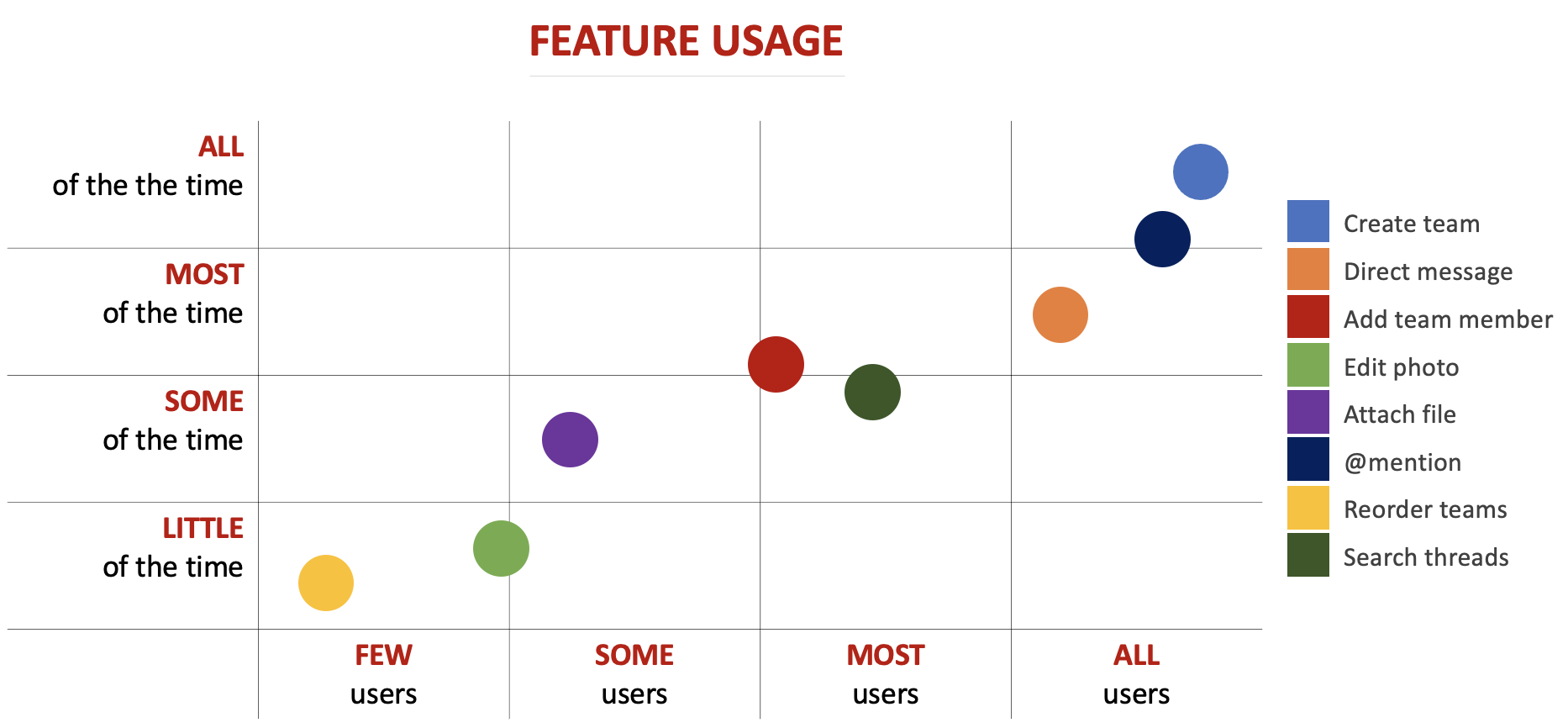- Marketplace Minute
- Posts
- How should I prioritise features for my marketplace MVP?
How should I prioritise features for my marketplace MVP?
Plus, why you should start with your riskiest assumptions
Hey - it’s Fiona
We’ve just wrapped up a double celebration – Easter (too much chocolate, no regrets) and my husband’s 40th birthday, which involved good food, great company, and a slightly-too-competitive game of Azul. Now that the sugar crash has passed, I’m back to work and thinking a lot about product roadmaps.
This week’s question is one I hear all the time: How do I decide what features to build first?
If you’ve ever found yourself staring at a long list of ideas, wondering what to prioritise, this one’s for you. We'll talk about how to filter feature requests, avoid the build trap, and stay laser-focused on what actually moves the needle.
QUESTION OF THE WEEK
How should I prioritise features for my marketplace MVP?
There’s a trap many marketplace founders fall into — the belief that your platform has to do everything from day one. Booking engine? Of course. Messaging system? Absolutely. Ratings, reviews, ID checks, wishlists, calendar sync, dashboards? Naturally.
But more features don’t equal more value. In fact, they often slow you down, confuse your users, and make it harder to test what’s really working.
The goal of your MVP isn’t to impress — it’s to learn.
Start with your riskiest assumptions
Feature prioritisation should be driven by learning, not just utility. The question to ask is:
What is the biggest assumption we’re making, and what’s the smallest feature we can build to test it?
For marketplaces, some of the most common early assumptions are:
People want to transact this way
Supply will sign up and list
Users trust the platform enough to pay
There's a real pain point worth solving
You don’t need a perfect product to test these. You need just enough functionality to simulate the experience and observe real behaviour.
Use the RICE or MoSCoW method if you need a framework
If you’re feeling overwhelmed, prioritisation frameworks like RICE (Reach, Impact, Confidence, Effort) or MoSCoW (Must have, Should have, Could have, Won’t have) can help.
But don’t just score features blindly. Tie them back to:
Your core value proposition
The specific behaviour you’re trying to validate
The one thing your user absolutely needs to experience
For example: If you’re launching a babysitter marketplace, a complex rating system might seem important. But early on, it’s more valuable to know whether parents are willing to book a sitter at all. That could be tested with a profile page and a call-to-action that links to a WhatsApp message — no fancy tech required.
Avoid building “comfort features”
Comfort features are the ones that feel safe. They’re familiar. Easy to explain. They make your marketplace look more like Airbnb or Etsy.
But unless they solve a key pain point or help you validate a risky assumption, they’re just distractions. These often include:
Admin dashboards
Advanced search filters
Wishlist or save buttons
Full-blown messaging systems
You can always add these later — once you’ve proven demand.
Focus on jobs to be done
Ask yourself: What job is each user coming to the platform to get done?
Your MVP should focus on delivering that job with as little friction as possible. Everything else is secondary.
For example:
Buyers want to find, evaluate, and book or buy.
Sellers want to list, get discovered, and get paid.
Any feature that supports those core jobs should be considered. Anything that doesn’t? Add it to the backlog for later.
Validate with real users before you build
You don’t have to guess. If you’re unsure whether a feature matters, talk to your users. Better yet, mock it up and test it:
Show a Figma prototype during interviews
Create a fake feature with a “coming soon” button and track clicks
Run a short survey with screenshots and ask: “Would this help you?”
You’ll often discover that features you thought were essential are actually low priority — or that there’s a simpler workaround.
—> ✉️ Reply with your questions and I’ll answer them in a future issue.
DESIGN SPOTLIGHT
Marketplaces that started lean and learned fast.
Airbnb (again, because it’s iconic)
Their earliest version didn’t have reviews, payments, or messaging. Guests paid in cash, and hosts were manually onboarded. The first goal? Prove that people would sleep in a stranger’s home. Everything else came later.
Bellhop
Bellhop is a marketplace for movers. Their original MVP was just a Typeform where users submitted moving requests, which the founders fulfilled manually via text messages. No algorithm, no backend — just learning what users needed most.
Stitch Fix
While not a classic marketplace, their early days involved spreadsheets, email, and human curation. Stitch Fix focused on delivering value, not building tech. Their sophisticated recommendation engine came years later.
DESIGN SNIPPETS
Some of my favourite content I found on the web this week.

Fiona Burns
Whenever you’re ready, there are two ways I can help you:
Marketplace idea validation - Get a research-backed, 15–20 page validation report assessing market demand, competition, monetisation, and customer acquisition, so you can move forward with confidence. Ideally suited to founders who are still validating their idea and aren’t ready to invest in building just yet.
Sharetribe configuration - I can set and fully configure your Sharetribe marketplace using the no-code tools available in the Sharetribe Console. This is best suited to founders who are ready to launch a proof-of-concept at a low cost.
UX/UI design - I provide a tailored UX/UI design service for marketplace businesses, including custom UI and bespoke features. This is aimed at founders who are ready to invest in a high-quality, custom-designed marketplace.
If you enjoyed this newsletter, why not forward it to a friend.
Did someone forward you this email? You can subscribe to Marketplace Minute here!





Reply